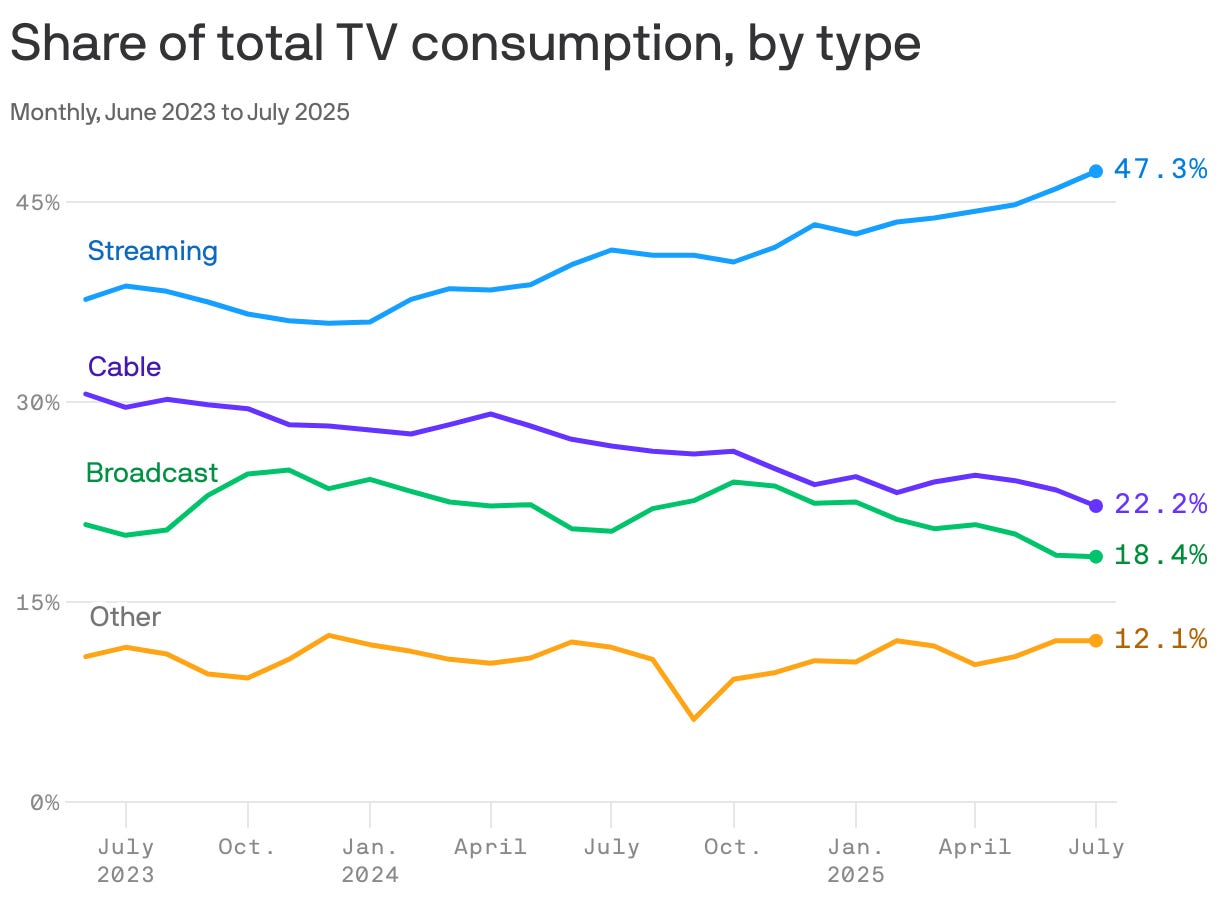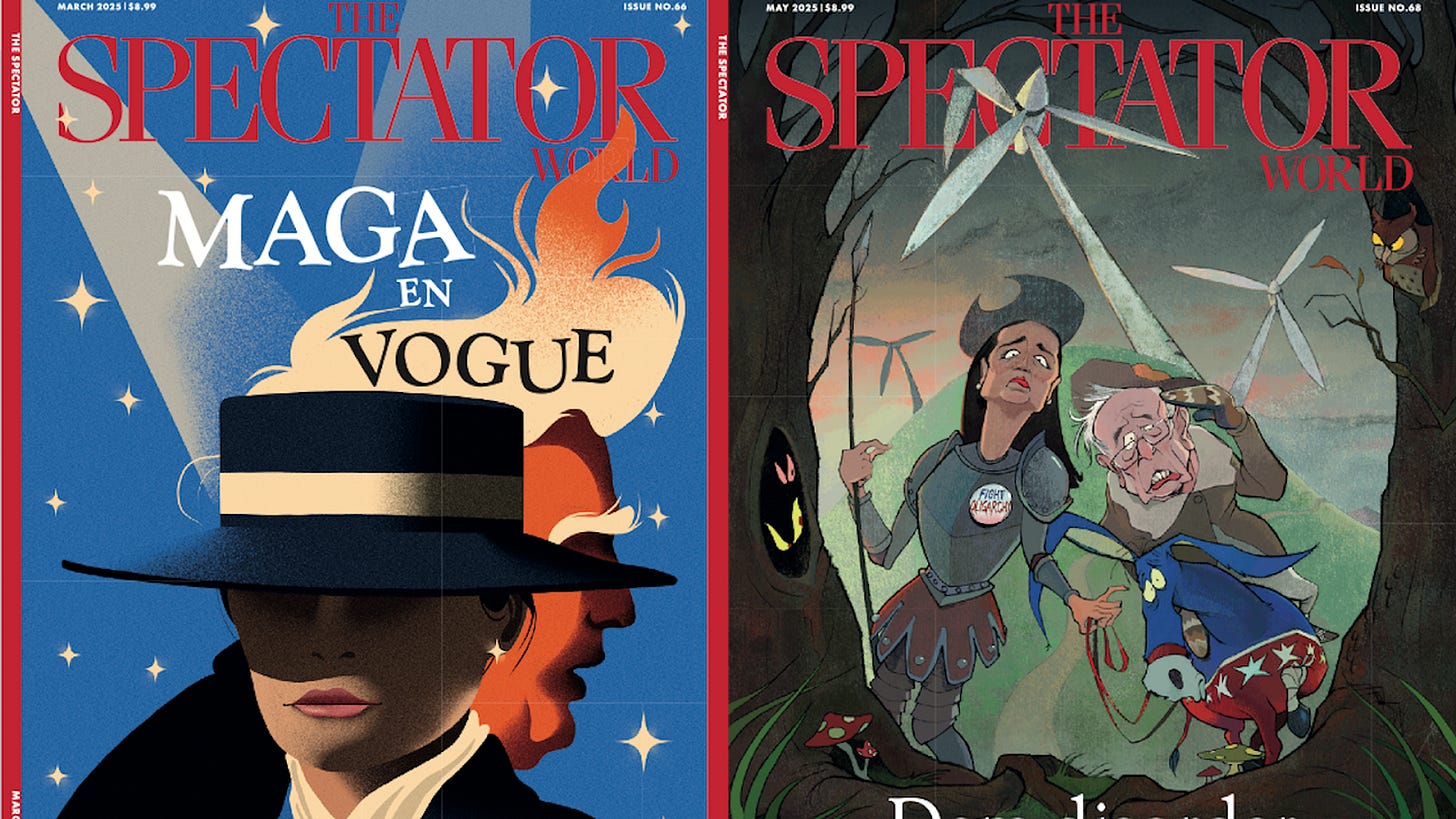📓Creativ Brief: Delegation and Principles of Effective Management
Job Hugging. MSNBC rebrands. ESPN reveals new app. CTO thoughts. 50% of TV viewership now streaming. Print revival.
The secret to productive management is directing employee’s work effectively.
I’m part of a new organization called the Founders Club. The number one issue raised by member founders is how to delegate effectively.
When done effectively delegation empowers employees, frees executives to work on higher level initiatives, and makes a business/team more productive. When done poorly, it creates bottlenecks, bogs down executive leadership in minutia, and grinds businesses to a halt.
To delegate is to authorize a person to represent or entrust a responsibility to another. Delegation can be more appropriately thought of as a distribution of power. It’s empowering employees to make autonomous decisions throughout an organization.
The more concentrated decision making is in an organization, the slower an organization moves. Approvals must go up and back down a chain of command in order to happen. Complex decisions that require multiple stakeholder buy-ins aggravate this process.
I’m smart enough to know that I don’t have all the answers. What’s the point of hiring great individuals if I make all the decisions?
By delegating decision making to individual organizational units in department leads, I am technically distributing power to other parts of the organization.
This does three things:
Empowered employees enjoy their work more. No one likes being micromanaged.
It frees me to focus on higher level decision making for the firm
The firm moves faster.
The hardest hurdle is leadership’s anxiety of employee failure. In my experience this anxiety is overblown.
First, people generally surprise you when you offer them an opportunity. Second, failures tend to be learnings and easily adjusted to.
3 Stories Shaping the Media and Tech Industries
Why More Workers Are ‘Job Hugging’ in a Weak Labor Market. As hiring slows and job growth hits its weakest levels since the post-2008 recovery (besides the pandemic), many workers are “job hugging,” – a.k.a., hanging onto their jobs even when unsatisfied due to the scarce opportunities available. The U.S. labour market remains stagnant, especially in white-collar and professional sectors, contributing to widespread anxiety among employees.
Why it matters: This shift gives employers more leverage, which can translate to less pressure to increase employee pay or improve working conditions. It also suggests fewer people will be moving between jobs, which could slow innovation and make it harder for new talent to break into industries.
MSNBC Rebrands as MS NOW Following Break from NBCUniversal. In the wake of its separation from NBCUniversal, cable news channel MSNBC will be rebranded as MS NOW (My Source for News, Opinion, and the World) by the end of 2025. Not only do these changes come with the shedding of the iconic peacock logo, but also establish the alignment with its new parent company, Versant. The rebrand is intended to reinforce the network’s editorial independence and modernize its identity.
Why it matters: This move is an example of how media companies are continuing to change in an effort to stand out more in a crowded market. It also puts the well-known MSNBC name at risk, which could make it harder to keep loyal viewers, while highlighting how big corporate changes can force major branding shifts.
ESPN Unveils New Streaming Service and Updated App Ahead of Launch. ESPN has launched a new streaming service that gives fans access to all 12 ESPN networks for $29.99/month. The updated ESPN App adds personalized highlights, a TikTok-style video feed, and the ability to watch across multiple devices. The launch comes just in time for major sports like NFL, college football, and the US Open.
Why it matters: This shows ESPN shifting toward digital-first viewing to reach younger audiences who prefer streaming over cable. The new app features make it easier to find and watch content, helping ESPN compete in the crowded streaming market. It also reflects how traditional media companies are adapting to changing viewer habits and technology.
Creativ Spotlight - Our CTO Joe Lai on AI & Creativity
Joe Lai has been instrumental in building the data pipelines, workflows, models, and user interfaces for our machine intelligent marketing stack.
My favorite take of his from his interview with LBB is below:
"I think a common misconception is that AI is an autonomous decision maker. At its core, LLMs are language models. They are able to consume and process information like no human can, but its outputs are ultimately statistical and they do not have the same understanding that humans do.”
Read his entire interview here.
Stat of the Week - 50% of TV consumption now streaming
Nearly half of all TV viewership now comes from streaming platforms, according to Nielsen. The market share comes mostly from cable’s decline, while broadcast has remained flat due to broad accessibility and sports rights.
Another eye-popping stat, YouTube now accounts for 13% of all TV viewership!
One Fun Thing - Print Media Revival?
According to Axios, there’s an industrywide print revival as publishers tap into a digitally fatigued audience.
“Several publishers, including The Onion, The Cut, Complex, Nylon, Spin, Us Weekly, Swimming World, Sports Illustrated, Saveur and Ebony, have all launched or relaunched print editions amid reader and advertiser demand. Even brands, such as Microsoft, Hinge and Costco, have all turned to print magazines to engage with hard-to-reach audiences.”
Our big thought bubble - if you can stand out from the crowd, whether it’s physicality, brand, message, that’s what matters. Differentiation is key.






